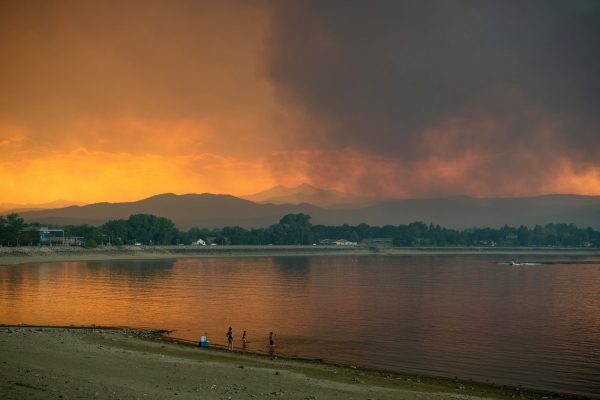
Photo by Jennifer Clary Jacobs
In the summer and fall of 2020, when the world was enduring a global pandemic, several other catastrophic incidents hit the Front Range. The Cameron Peak (August – December 2020) and East Troublesome (October – November 2020) Fires burned hundreds of thousands of acres in Rocky Mountain National Park and surrounding national forests, some two dozen miles from Dr. James M. David, CSU faculty composer’s home. In one of Colorado’s most destructive wildfires in the state’s history, ash fell for weeks, and the sun was obscured almost entirely during the peak.
Dr. David, an award-winning composer, was inspired by the anger, fear, and frustration he felt as the fires and their impact lingered. “I wanted to write something that responded to it. Compounded by COVID, it felt like something that I never experienced in my lifetime,” David said. And the concept for the symphonic composition, Troublesome Fire, was born.
Throughout the composing and performance process, a composer converts an inspiration into musical expression and entrusts their new work to a conductor’s interpretation and an ensemble’s skill. The world premiere performance of Troublesome Fire was performed “in memory of clear skies” by the CSU Wind Symphony, conducted by Dr. Rebecca Phillips, on Oct. 22, 2022.
Matchstrike
The symphony opens with the ‘match strike’ of the initial spark followed by a tight chromatic motif that evokes slow-building tension.
“A lot of outside elements come in at the beginning, followed by sketching and improvising on the piano for a few weeks before putting pen to paper,” said David of the composing process, who incorporated two defining elements into the work: the use of electronics, specifically using field recordings, and improvisation. During the piece, the calls of a lone bull elk and a soaring eagle echo across the landscape. David recorded the elk bugling in nearby Rocky Mountain National Park.
For David, it was imperative that the piece feel distinct and alive, something to be experienced in the moment. “A lot of art now is commodified and feels like a product instead of the unique creation of people,” said David. “This piece strove to be as far away from that as possible. To be about a uniquely personal experience and a unique collaborative experience in the actual performance of it.”
After a destructive climax, the composition concludes with the calm of snow-covered embers.
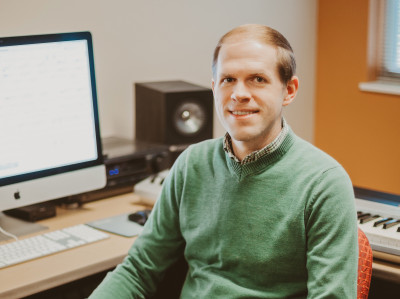
Award-winning composer
In January of 2023, James M. David won the National Band Association William D. Revelli Composition Competition. His piece, “Flying Jewels,” was selected from a record 95 submissions. “Flying Jewels” was commissioned for The United States Air Force Band project, “Hope Arises,” and premiered in 2022 under the baton of Col. Don Scholfield, USAFB commander and conductor.

From the Growing Flames
An element of collaboration is how a conductor chooses to interpret the score. “The conductor has a large amount of agency for interpreting major proportions of this piece. I encourage that as much as possible,” said David.
Conversely, for Dr. Rebecca Phillips, the job of the conductor is to “most clearly and accurately do the will and intent of the composer.” Phillips notes that for this reason, research is important. Who is the composer? What music have they written? What are the characteristics of their music? These questions get at the heart of a composer’s voice. “Our job is to take this beautiful new piece of art and make sure that we are interpreting what they wrote, and it is aligning closely to what they have in their head,” Phillips said.
“[Troublesome Fire] is a pretty special collaboration,” Phillips said. “What makes it so incredibly unique is that both Jim and I lived through the experience here in Fort Collins, along with many of the students who were part of the group performing the work.”
David included an optional improvisational section for various instruments in Troublesome Fire, which relays the growing sense of chaos that came with the fire. Phillips said, “In the notes and markings, Jim says ‘do this for approximately 8-12 seconds, who is going to pick 12 and who is going to pick 8—and in the midst of performance, what is their timing and their internal pulse like? These are all things that define individual performances of the piece.”
When trying to convey the composer’s notated perceptions to musicians, Phillips finds descriptive words she hopes are interpreted by the students in such a way that they play the sounds the words evoke. “For instance,” Phillips said, “if we’re talking about the intense heat of a fire, and replicating that in sound, would “spectral,” combined with an intense gesture, help produce an unearthly sound? It's not just the visual of it but how it feels.”
Another part of Phillips’s job at the academic level is to help students process a piece and then perform it without becoming emotionally distressed. “The first time that the saxophones played that elk cry in rehearsal, the flute section turned—you could see it in their faces,” Phillips said.
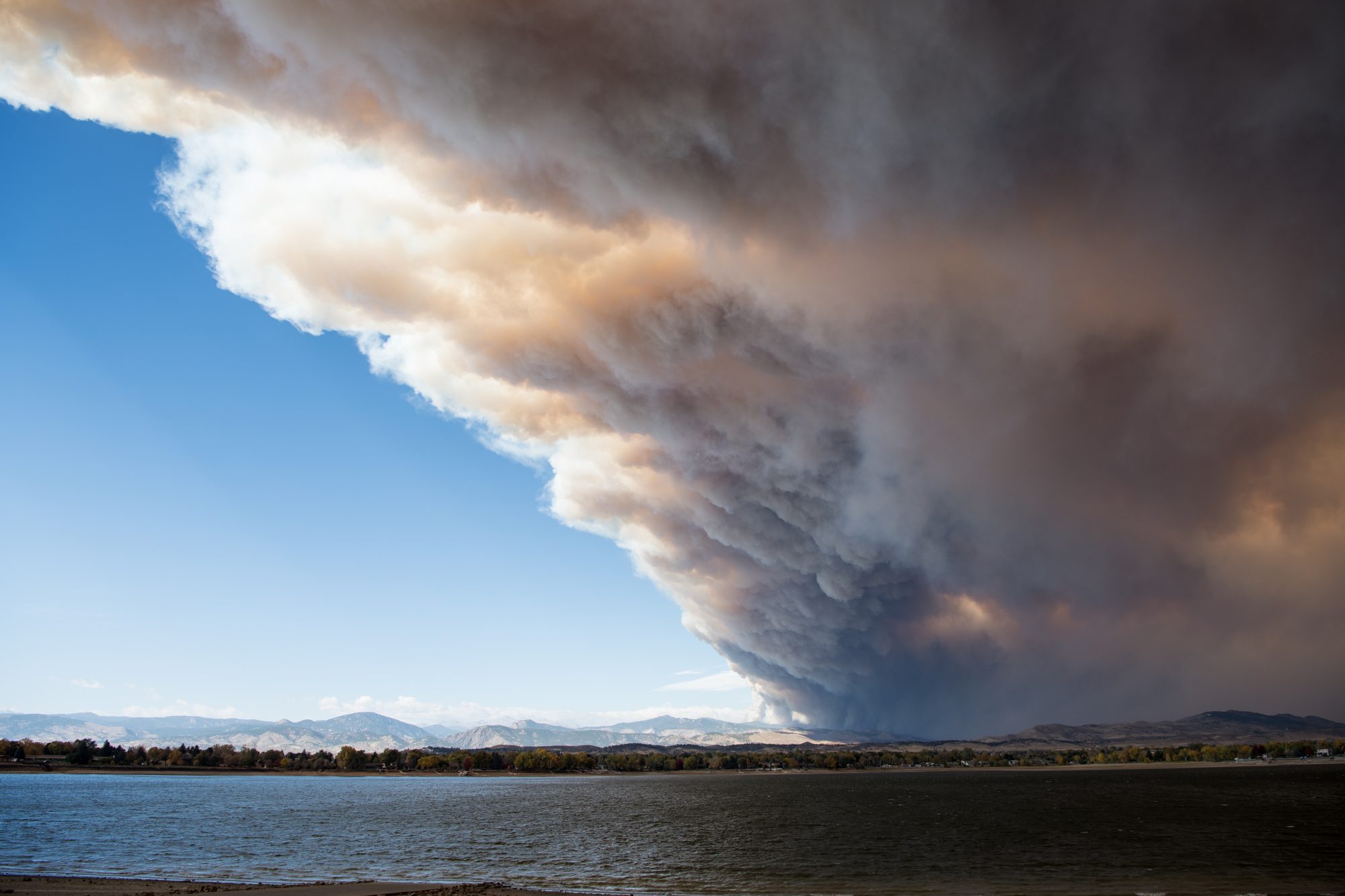
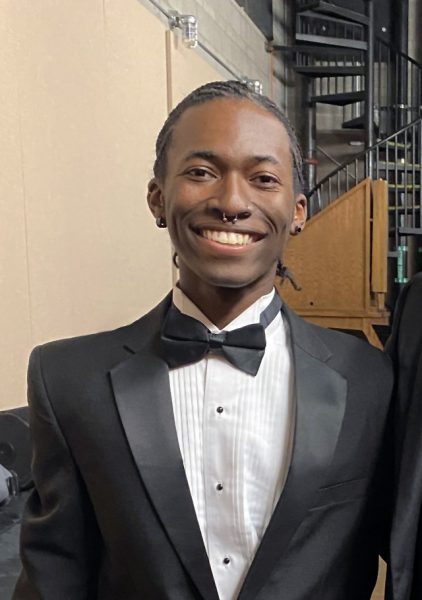
Rises to its Zenith
David’s program notes describe the climax as a pyrocumulonimbus cloud rising to its zenith as a monumental aleatoric moment explodes from the entire ensemble.
Music performance and composition major, Jalen Thompson, describes a page of music as building blocks and structures that the composer uses to convey ideas to musicians. “[Reading music] isn’t really any different from learning any other language,” he explained. When an ensemble learns a piece, the choices that group makes effects that specific performance, which, in turn, impacts the audience's reaction. “The composer has created a piece that, without performers, are just instructions,” said Thompson.
Thompson sees collaboration as a key interpretive tool for everyone involved. “Collaboration is my favorite part of creating and performing music,” said the percussionist. Having access to a composer, like Dr. David, and being able to ask questions “creates personal performances of new works in contemporary art music.”
Playing Troublesome Fire was incredibly special to Thompson. “Typically, I don’t hear or see reactions from audiences during pieces, but in David’s piece, there were many [audience] reactions to his work, and I was beyond proud of being able to produce this piece with the CSU Wind Symphony and Dr. David.”
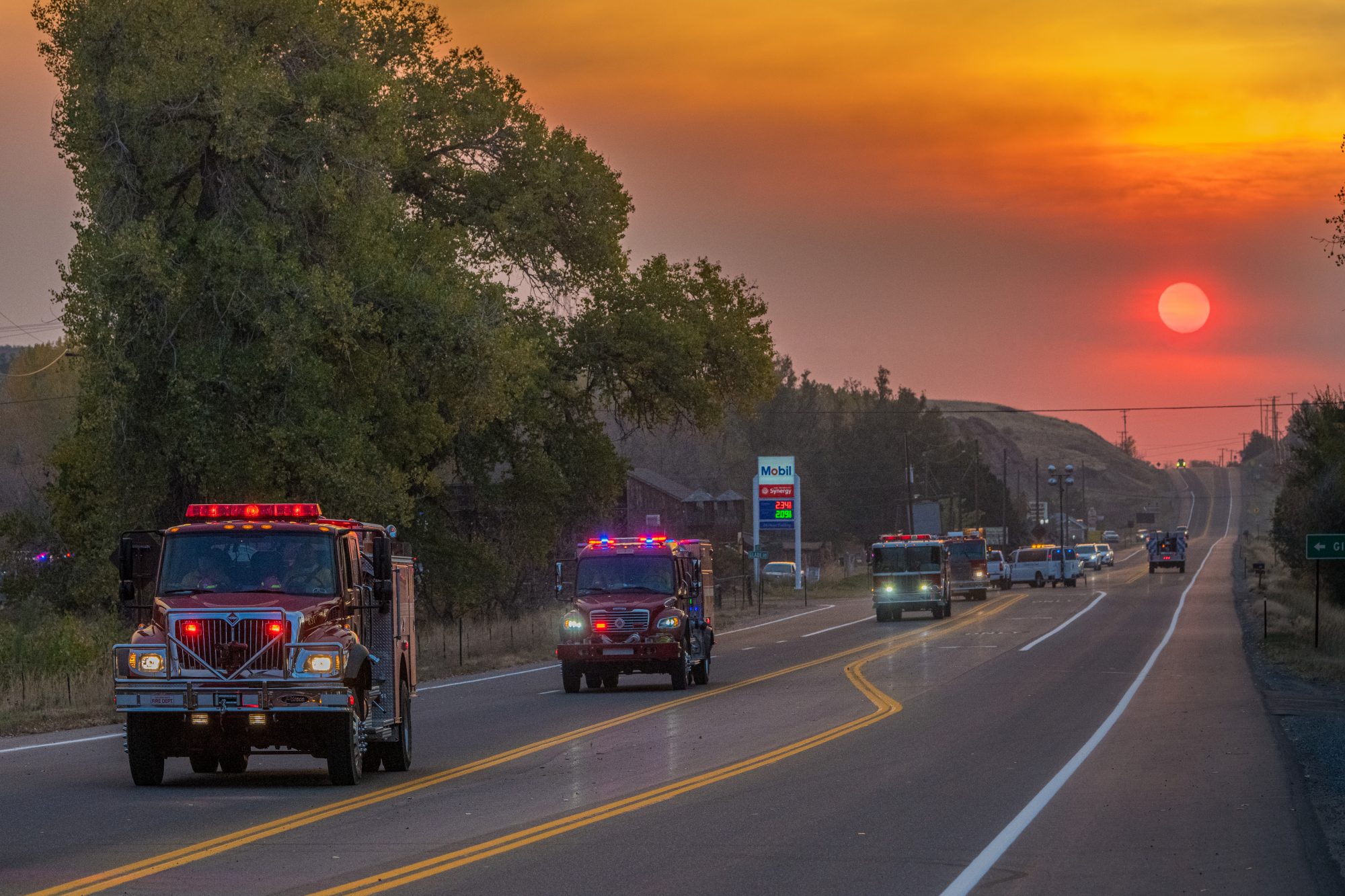
Requiem for a Scarred Landscape
The way Troublesome Fire is constructed, variations occur from performance to performance (the piece has been performed six times now). Phillips added that the perception of the piece by an audience will also change. “The perception of an audience experiencing the piece that they lived through is going to be different from an audience wanting to understand the experience of someone else who lived through it.”
Estes Park high school students and their band director, who were evacuated with their families and feared for their homes, attended the performance, and added to the impact for everyone in that room that night.
Audience members mentioned the visceral reaction to the building tension, which conjured harsh memories of the erupting smoke plume, the persistent brown haze that made the day into night, the brave firefighters going into battle, and the red flames that could be seen from homes in Loveland and Fort Collins.
As Troublesome Fire concludes, the audience is met with “a blast of digital snow and wind leading toward a requiem for a scarred landscape and a nervous, unresolved final cadence,” allowing the audience to exhale a sigh of relief and rejoice in the falling snow.
The School of Music, Theatre, and Dance invites you to watch the premiere performance of Troublesome Fire and examine your own perceptions.
Troublesome Fire by James M. David
World premiere performance on Oct. 22, 2022, by the Colorado State University Wind Symphony, Dr. Rebecca Phillips, conductor
To-date, Troublesome Fire has been performed at Colorado State University, Fossil Ridge, Kentucky, and Central Michigan, UNC, and South Carolina.
Consortium of universities and high schools that commissioned Troublesome Fire
Colorado State University
Augustana University
Central Michigan University
Mississippi State University
Northern Arizona University
University of Kentucky
University of Iowa
University of Florida
University of Kansas
University of Arkansas
University of South Carolina
University of Northern Colorado
University of Tennessee at Chattanooga
University of West Georgia
West Chester University
Biloxi High School (MS)
Fossil Ridge High School (CO)
New Trier High School (IL)
Rocky Mountain High School (CO)
